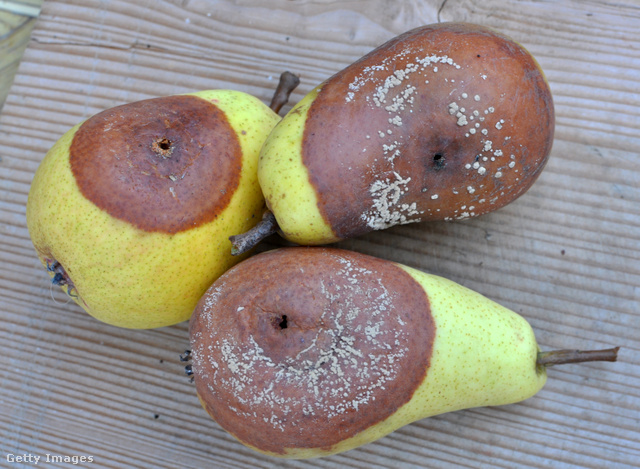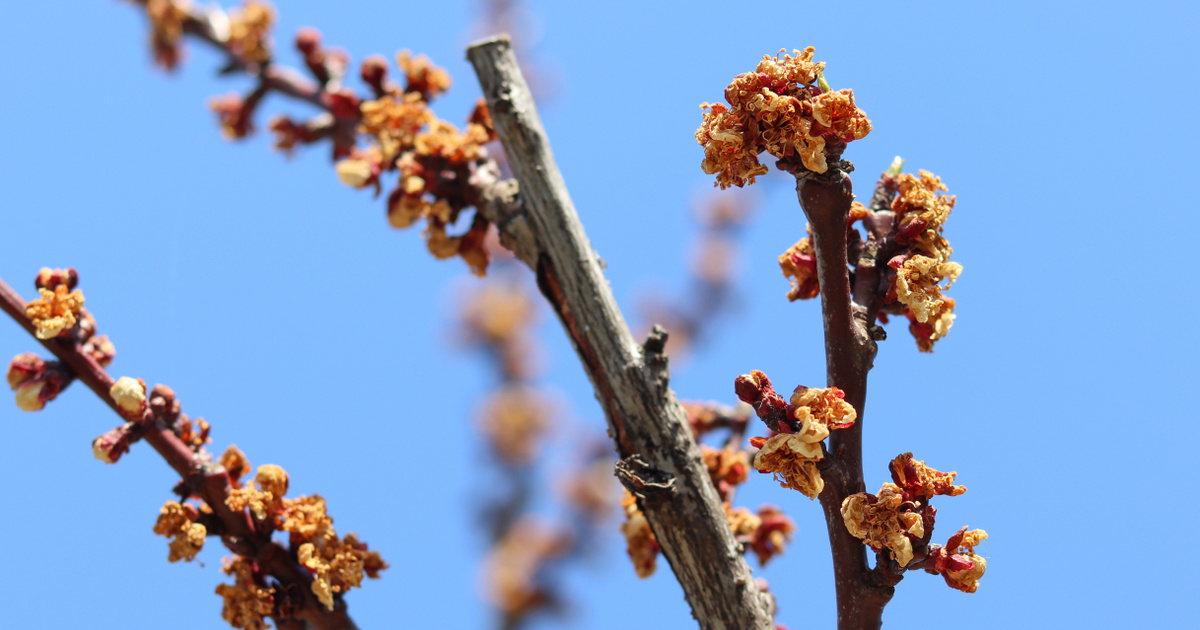The current wet, rainy weather favors a fungal infection known as monilia, which is decimating fruit trees in more and more gardens. We asked horticultural engineer Zabolcs Megeri about the disease.
According to the specialist in Europe Three main Monilia species are known. while he M. fructigena Mainly fruit, that’s it M. laksa and the Monilinia fructigena attack flowers. Another difference is that the M. laksa Primarily stone fruits (such as cherries and apricots), ie M. fructigena Rather, it infects apple fruits (such as apples, pears, quinces, and medlars).. “The weather has a huge impact on the development of the Monilia epidemic, and now you have to pay special attention to it, as warmer days are followed by cooler, wetter and rainier weather,” warns Szabolcs Megyeri.
How do you get Monilia?
Monilinia laxa attacks trees during flowering, It also endangers flowers, especially in cold and wet weather. Highlights of the horticultural engineer A visible symptom is when the bloom turns brown, dries up and droop.
“All affected parts are drooping, possibly discolored, turning brown. This The fungus can infect leaves and fruits, but mainly shoots. If the infection has progressed, then already late to spray Therefore it is worth starting as early as possible, when early symptoms are detected or even earlier. advised Szabolcs wins.
One of the typical signs of monilia disease is that the branches and buds of fruit trees dry upKazakovmaksim / Getty Images Hungary
On the other hand, Monilinia fructigena attacks the fruit itself. The species M. laxa and M. fructigena both have in common It causes infection through an external injury. Therefore, it is worth spraying fruit trees before they bear fruit.
infection Its characteristic symptom is the appearance of small gray-yellow dots in concentric circles on the surface of the fruit. These are the breeding colonies of the fungus, that is, the conidia. Symptoms of M. laxa appear on infected fruit, but they are In the case of M. fructicola, fungal colonies can cover the entire fruit.
“During the consistently wet rainy season, when the humidity is also high, Monilia infects the fruit sooner. What’s more, M. fructicola infection does not require infection, it can spread through the intact fruit rind.”
Infected fruits shrivel, dry out and/or fall to the ground or remain on the tree, forming a so-called “mummy”. These crop residues must be collected to prevent the spread of infection – Zabolcs-Megeri advised, according to those for similar reasons It is recommended to remove and then destroy all infected parts of the plant – including branches, twigs, leaves, buds and flowers.
The spraying of lavage should not be neglected in spring and winter either, because the pathogen can overwinter in infected parts and mummies.
The fungus can also appear as a gray coating on infected branches, flowers, and leaves. The tree can be protected from the next pestilence by removing, pruning and destroying the affected parts but Proper cuts should also be taken care of when pruning.

The infection can also attack the fruit – even during storageOrest Lyzhechka / Getty Images Hungary
“The characteristic symptoms of the disease can be found not only on plantations, but unfortunately also during fruit storage. Then they will have a darker color, they will soften, if you squeeze them, they will have a texture similar to a sponge. Fruits can also infect each other, making room for pathogens through surface damage. For this reason, it is important to sort them out so that there are no rotten and infected pieces.”
How do we prevent fruit tree disease?
The focus is on prevention, especially in home gardens. To avoid infection with monilia, When planting, you should choose a tree that produces fruits with thicker skin or lower sugar content.
The fungus attacks ripe fruits that have a high sugar content.
Szabolcs Megyeri believes it was due to the climatic conditions Choosing the right area is also very important, And it is a defense to take steps even before the first symptoms of infection appear, even for plant protection purposes.
In addition to chemical control against Monilia fungus Essential with insects (eg bugs, wasps, fruit moths) defend againstBecause they can cause injuries and bites on the peel of the fruit, so the fungus can get inside, It can infect him.

The spray should be applied preventivelyFotoDuets / Getty Images Hungary
“on installation We can, for example, use a net against frostbite, which also avoids injuries. With chemical protection, we must pay attention to whether we want protection from fungi or insects that appear.
The treatment period should be appropriate to the flowering period, and then also applied at the time of flowering and petal fall. It is also important to have the proper timing and method of applying a plant protection product. at the beginning of flowering It must be protected with absorbent preparations, And at the time of flowering it is appropriate to soak and To combine active contact agents. Shellfish are particularly sensitive to the active element copper, and they can cause burns, so their use should be avoided.
“It’s also important In order to protect bees and pollinators, do not use insecticides during flowering or only in the late afternoon, evening hours, in the manner specified in the regulations. With proper protection and weather monitoring, we can actually take preventative measures to ensure that Monilia does not become infected, And there will be a bumper harvest next year.”

Three cookbooks with free shipping!
Mentes Anyu’s cookbooks are recommended for those who follow a special diet for the sake of health or with conviction, but also for those who are just looking for inspiration and new flavours.
Now with free home delivery!
Check out our offer click here!
advertisement












































